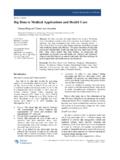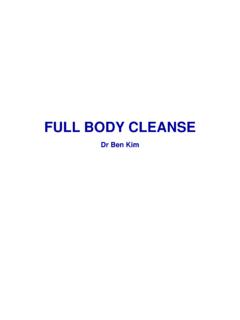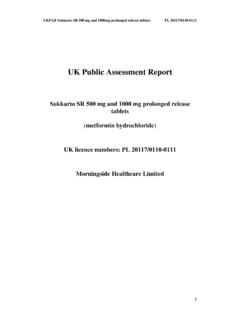Transcription of Rapid Entire Body Assessment: A Literature Review
1 2016 Dima Al Madani and Awwad Dababneh. This open access article is distributed under a Creative Commons Attribution (CC-BY) license. American Journal of Engineering and Applied Sciences Literature Reviews Rapid Entire Body Assessment: A Literature Review Dima Al Madani and Awwad Dababneh Department of Industrial Engineering, The University of Jordan, Amman, Jordan Article history Received: 16-09-2015 Revised: 05-10-2015 Accepted: 12-02-2016 Corresponding Author: Dima Al Madani Department of Industrial Engineering, The University of Jordan, Amman, Jordan Email: Abstract.
2 The aim of this Review is to provide a summary of one of the observational postural analysis ergonomic assessment tools; Rapid Entire Body Assessment (REBA) in terms of its development, applications, validity and limitations. Research showed REBA s convenience for postural assessment of jobs in numerous professional settings, including industrial and health care jobs, construction, sawmill tasks, supermarket industry, food industry, computer based jobs, packaging, school workshop, odontological services and for firefighters and emergency medical technicians.
3 Face validity is established in two stages. In terms of concurrent validity, several studies used REBA to compare the results with other observational and direct methods so that the level of conformity between the two is determined. The limitations discussed in this Review did not hold the method s implementation back, on the contrary, it is currently used and remains a Rapid to use tool with computerized checklist and tables available in public domain. Keywords: Ergonomic Assessment, REBA, Literature Review Introduction Ergonomic assessment of Work-Related Musculoskeletal Disorders (WMSDs) involves the evaluation of risk of developing a range of disorders to muscles, nerves and joints, primarily to the upper limb and low back, associated with occupational tasks.
4 Musculoskeletal disorders are among the most widely spread occupational problems for both developed and developing countries, in industries and services, with increasing expenses of salary compensation and health costs, declining productivity and lower quality of life. These disorders are caused by different risk factors interactions resulting from several factors, which can be categorized into individual, psychosocial and physical factors.
5 Physical load of work is usually evaluated by analyzing body posture, movement; recurring and forceful activities and maximum force, or increasing muscle load over time. Observational and instrument based techniques are proposed in research to provide a quantitative measure for the degree of discomfort and postural strain caused by different body positions. The angular departure of a body segment from the neutral posture in the observational technique is acquired through visual perception, whereas recordings of the body positions done continuously in the instrument-based techniques are taken using a device attached to a person.
6 The observational techniques are broadly used in industry for their noninterference with the work performed, low price and simplicity of use (Kee and Karwowski, 2007; Janowitz et al., 2006). Based on a Review of different observational techniques, it is shown that the purpose of their development is for various uses and therefore they are applied in a multiple workplace circumstances. Each technique has its own posture classification application, which is different from other techniques, so different positional load rates can be assigned for a given posture, based on the technique used.
7 On the other hand, there are lots of studies that evaluate many techniques with regards to their performance and dependability (Kee and Karwowski, 2007). Observational techniques include Ovako Working Posture Assessment System (OWAS), Posture, Activity, Tools and Handling (PATH), Quick Exposure Check (QEC), Rapid Upper Limb Assessment (RULA), American Conference of Governmental Industrial Hygienists Threshold Limit Value (ACGHI TLV), Strain Index (SI), Occupational Repetitive Actions (OCRA), NIOSH Lifting Equation, Rapid Entire Body Assessment (REBA).
8 Etc. Programs of risk prevention and reduction are based on measuring the exposure to identifiable risk factors. In Dima Al Madani and Awwad Dababneh / American Journal of Engineering and Applied Sciences 2016, 9 (1): DOI: 108 order to achieve the optimal solutions, these programs should be based on ergonomics principles and should include a wide-range assessment of all elements of the work system (David, 2005). The purpose of this Review is to provide an overview of one of the observational postural analysis ergonomic assessment tools; Rapid Entire Body Assessment (REBA) in terms of its development, applications, validity and limitations as indicated in the Literature .
9 Note: The target audiences for this Review are those considering using the REBA method but do not have prior knowledge of it. It presents the method technique, its applications, and further discusses its validity as an ergonomics assessment tool. Background and Development One of the necessary requirements for evaluating job activities is postural analysis. The risk of musculoskeletal injury associated with the recorded positions can be useful in implementing change in the working practices, in the context of a full ergonomic workplace evaluation.
10 The ergonomics practitioner can greatly benefit from the availability of task-sensitive field techniques (Hignett and McAtamney, 2000). REBA was proposed by Hignett and McAtamney (2000) in the UK as a requirement observed within the range of postural analysis tools, specifically with sensitivity to the type of changeable working positions found in health care ( , animate load handling) and other service industries. REBA provides a quick and easy measure to assess a variety of working postures for risk of WMSDs.






